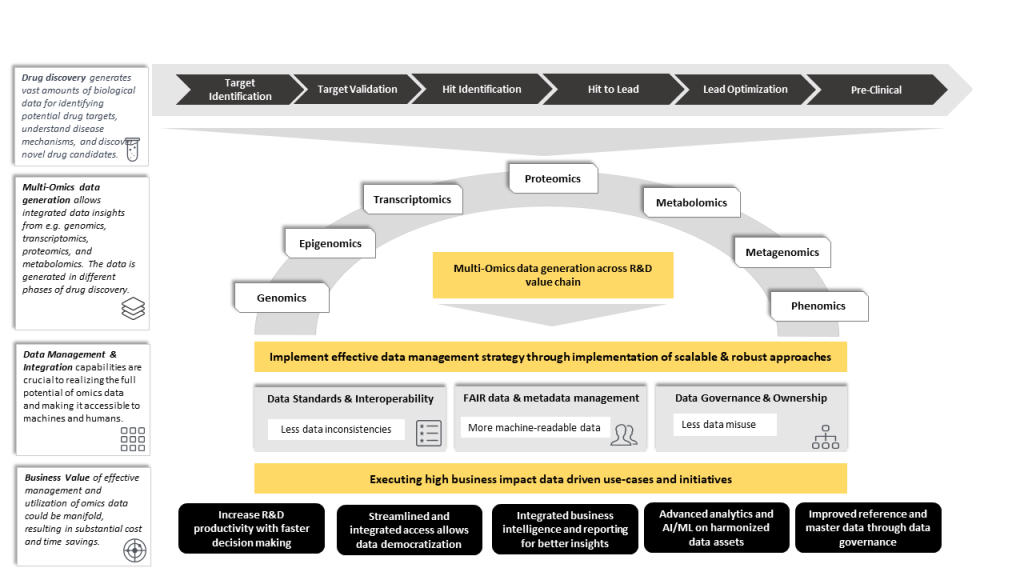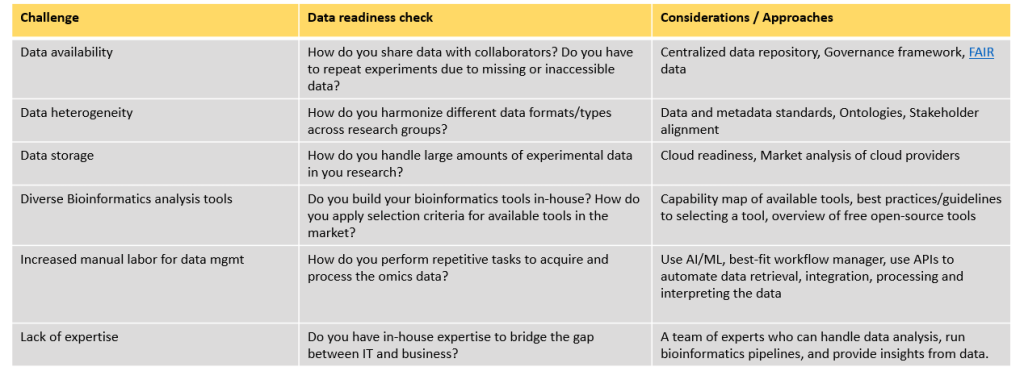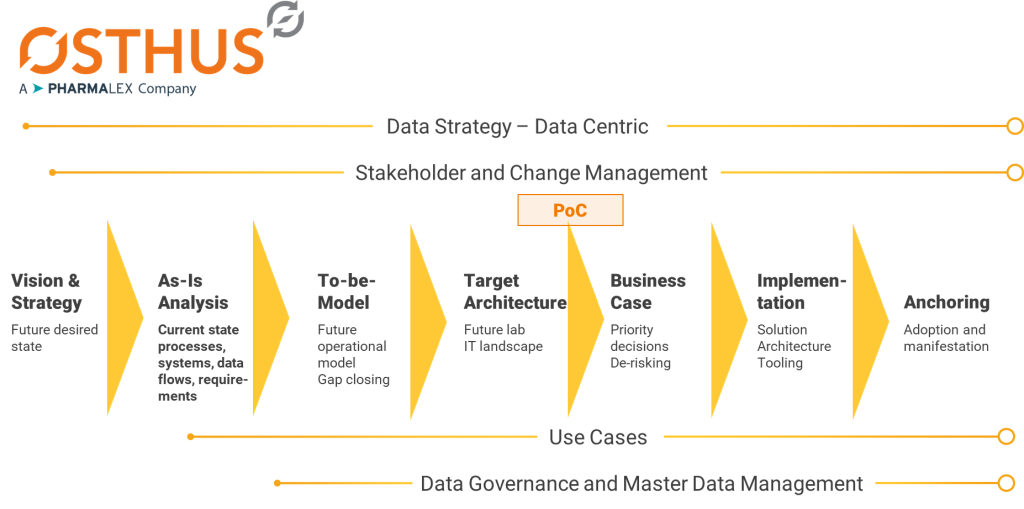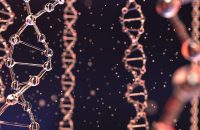Unlocking Precision Medicine: Omics Data Challenges & Solutions
Table of Content:
- Key points
- Keywords
- Background
- Business value of integrated omics data
- We at OSTHUS have done it before: Offerings
Key points:
- Omics technologies is a fast-paced field that produces large amount of data and an effective data management brings opportunities as well as challenges1.
- Having deeper omics data analysis capabilities and Bioinformatics expertise are becoming central to drug development.
- Multi-omics data strategies and a long-term vision of enterprise-wide needs is the key to realizing the full potential of its business value.
Background:
The first complete gapless human reference genome was published in 2022 (draft genome that was published in 2003 was incomplete) by Telomere-2-Telomere consortium – discovering 200 Million more base pairs and 1956 new gene predictions in the process2. It unlocked further potential for functional studies to find new therapeutic targets.
Multi-omics (also called Panomics or integrative omics) is the integration of omics data sets arising from the subfields such as genomics, transcriptomics, proteomics, metabolomics; aimed at increasing our understanding of biological systems3. As the pharmaceutical industry is increasingly embracing the era of precision medicine, the fast-paced omics technologies are becoming the significant driver in this transformation journey. However, as per our experience in the field, gaps remain with respect to data integration, data harmonization, design considerations, and data management strategies for realizing the full potential of omics data.
Genomic databases like GenBank and the Sequence Read Archive (SRA) collectively hold 100+ petabytes of data and are predicted to exceed 2.5 exabytes by 2025. Collecting, integrating, and systematically analyzing heterogeneous big data with distinct characteristics are a challenging task that may lead to data mismanagement. For instance, DNA sequencing data often comes from various platforms like Illumina, Pacific Biosciences, and Oxford Nanopore, each producing data with unique quality thresholds and file types. One specific issue involves the use of multiple identifiers. A protein can have several identifiers depending on the database used, such as UniProt, PDB, or internal source systems. Discrepancies in mapping these identifiers may lead to confusion or misinterpretation of results arising from multiple systems, hindering the downstream data analysis.
Our understanding of the business values of multi-omics data (holistic view):
- Streamline R&D processes: The use of omics data can streamline R&D processes. For example, it can help in identifying biomarkers with high confidence that support the predictive models of disease progression.
- Accelerate drug discovery and development: Omics data, when integrated, can provide in-depth molecular insights that can help businesses save time and resources in drug discovery research and predicting drug efficacy and safety at a quicker pace.
- Gain deeper insights: Integrated omics data allows for a more detailed understanding of individual genetic and molecular profiles, driving personalized healthcare solutions.
- Cost Reduction: Efficient data strategies enabled by streamlined storage, processing, and analysis of omics data, reduce the costs associated with these processes.

Figure 1: Illustration of our understanding and approaches for leveraging multi-omics data
Our exemplary approaches and considerations to certain challenges in omics data management:

Figure 2: OSTHUS’ exemplary approaches and considerations to certain challenges in omics data management
Leveraging Bioinformatics Expertise for Optimizing Omics Data Management
How can OSTHUS help?

Figure 3: OSTHUS consulting approach from vision to implementation
In our recent project, a pharmaceutical company was struggling with efficiently managing their genomic and protein sequence data. We are implementing a bespoke cloud-based centralized data lake solution that not only consolidates different data and metadata but also offers an intuitive user-interface that provides ability to quickly extract insights from similar sequences in in-house as well as publicly available resources.
OSTHUS offers end-to-end services from vision and strategy, to market analysis, to implementation. Recognizing that one size doesn't fit all, we offer technology agnostic consulting. Our Bioinformatics experts understand the available technologies and their strengths as well as weaknesses, from open-source solutions to commercial offerings, which allows us to recommend and implement the best-fit solution that caters to specific objectives.
Conclusion:
To realize the full potential of these approaches and transform raw omics data into meaningful insights, a strategic and robust data strategy is critical.
With strategic planning and expert guidance, these challenges can be effectively managed, unlocking the immense potential of integrated omics data for accelerated drug development.
Contact us today to revolutionize your bioinformatics journey and empower data-driven decision-making in your drug development efforts.
References:
- Omics data science – an interdisciplinary solution
- The complete sequence of a human genome
- Integrated Omics: Tools, Advances, and Future Approaches
- Undisclosed, unmet and neglected challenges in multi-omics studies
Disclaimer:
OSTHUS GmbH is a subsidiary of AmerisourceBergen Corporation. OSTHUS GmbH and AmerisourceBergen strongly encourages readers to review all available information about the topics contained in this blog and to rely on their own experience and expertise in making decisions related thereto.




